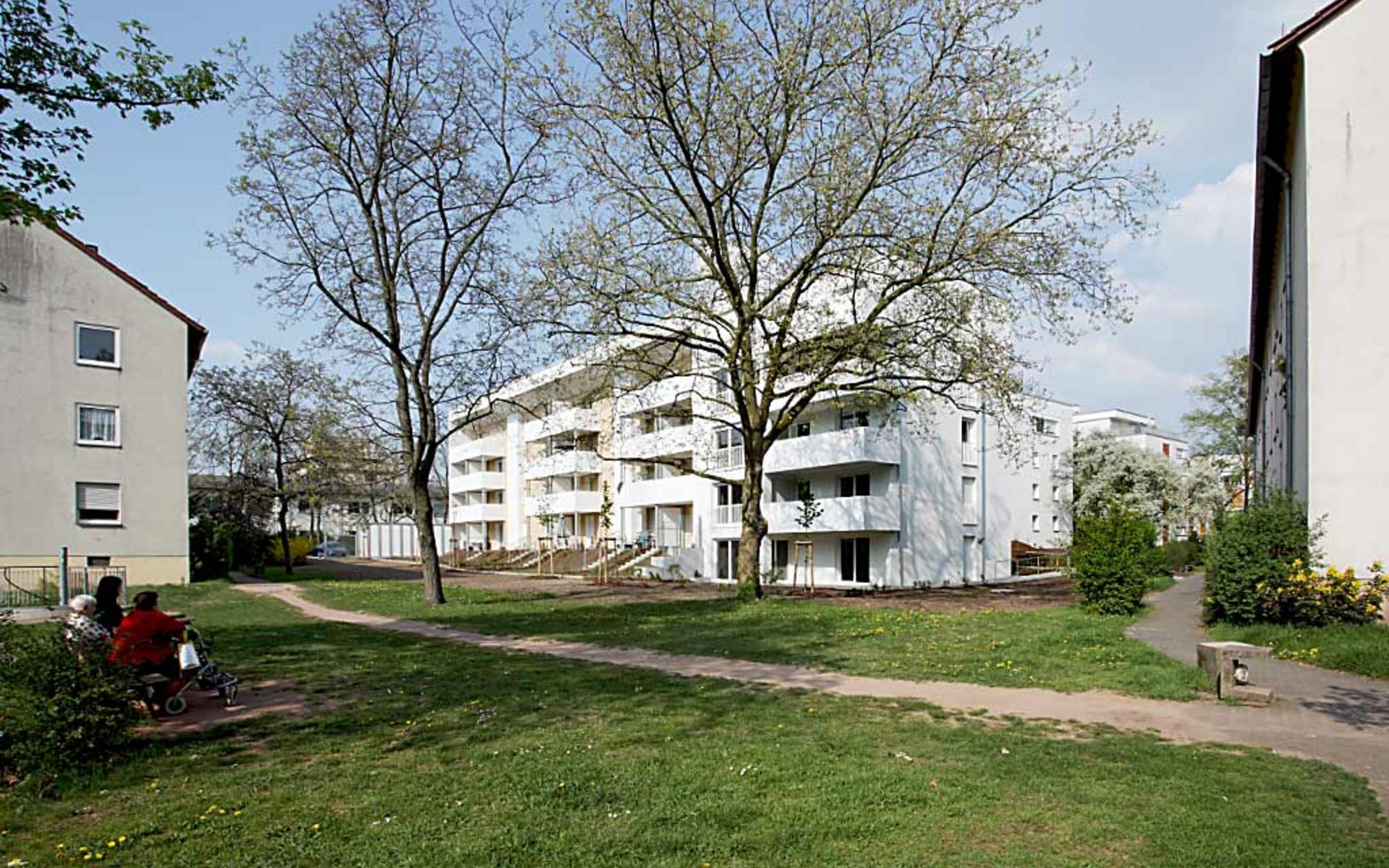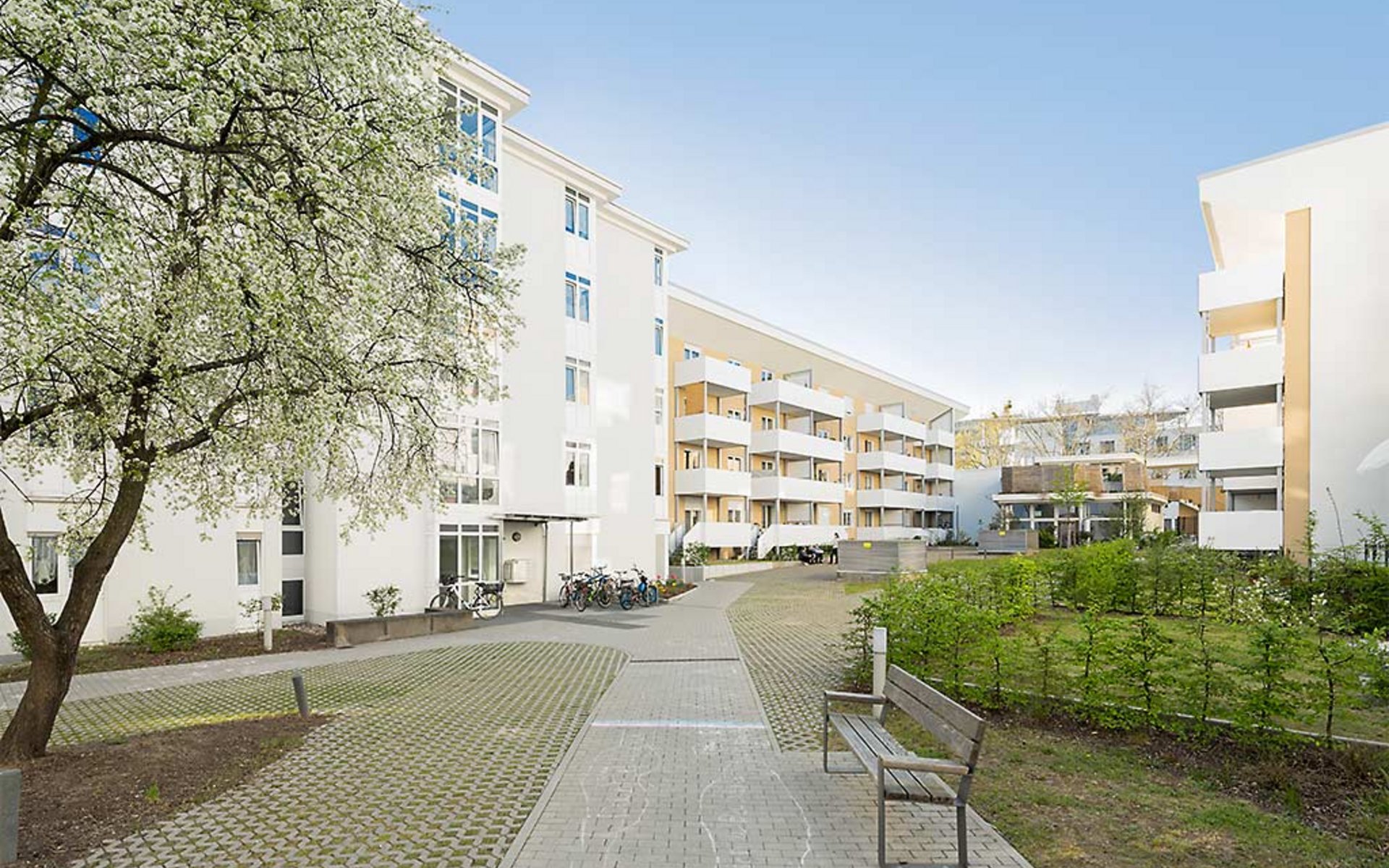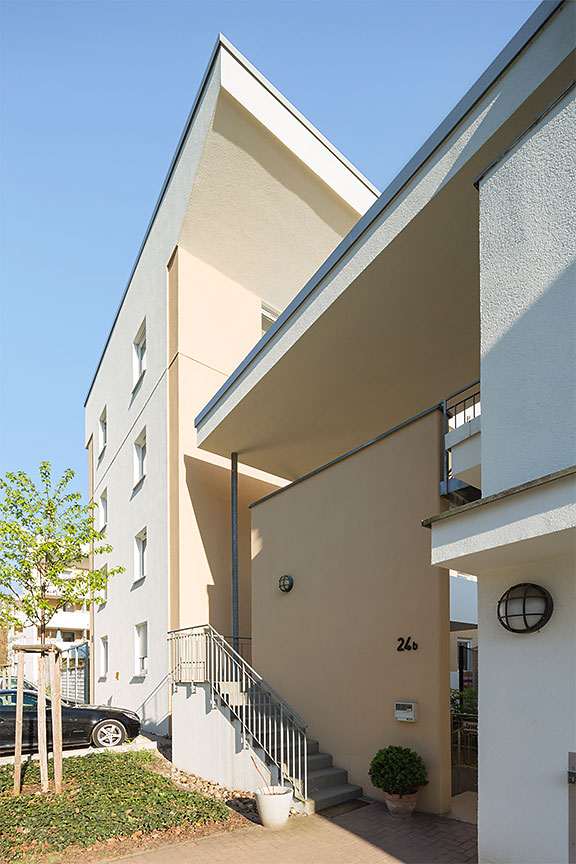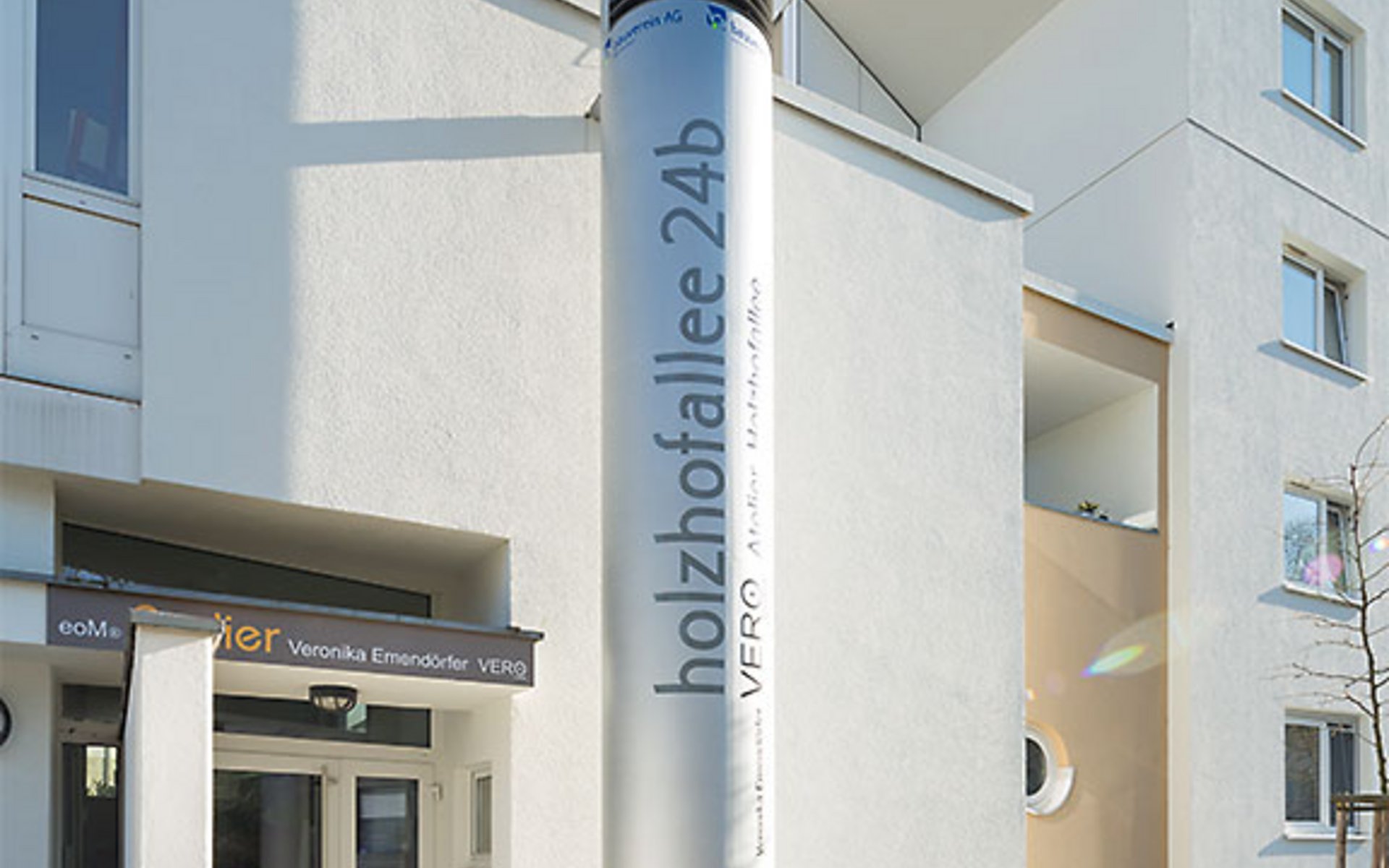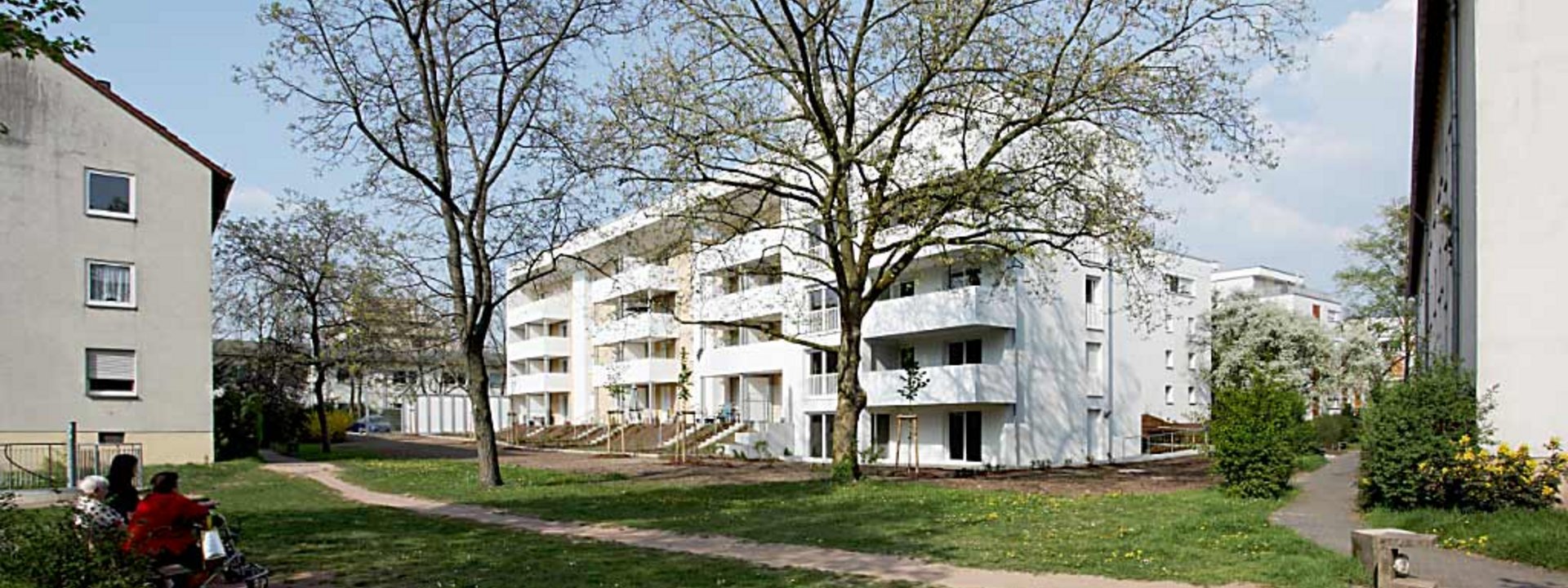
Holzhofallee 24
In 2001, bauverein AG began to make a housing estate in Holzhofallee / Schepp Allee, which was built between 1951 and 1953, fit for the future by creating additional living space through careful densification, modernising the buildings and renovating them to make them more energy-efficient, as well as ensuring a housing mix that included not only rental and owner-occupied flats, but also subsidised flats.
The reason for the programme, which was divided into twelve construction phases, was that the buildings, as in the "Postsiedlung", had a large number of age-related and structural defects. In addition, the consumption of heating energy was high, as were the CO2 emissions. As part of the energy-efficient refurbishment, the company had seven existing buildings each extended by two storeys and two dilapidated buildings replaced with new constructions. The conversion turned 156 flats, spread over 7,781 m², into 238 flats. The living space was even increased to 16,136 m².
Despite the doubling of the living space, the energy-efficient refurbishment has reduced the primary energy requirement by 72%. This not only benefits the environment - CO2 emissions fell by 35% - but also the tenants: Since then, they have only paid 27% of the energy costs that would have been incurred if the building had not been refurbished.
However, Holzhofallee / Schepp Allee is a showcase project in a completely different respect. The value of the neighbourhood has increased almost six-fold as a result of the renovation. In line with its corporate philosophy, bauverein AG invested the money resulting from the added value in the creation of 66 new social housing units. An excellent example of how subsidised housing can be financed despite increasingly scarce public funding.
Photos: © Frank Seifert, www.frank-seifert.com
year of construction
Modernisation period from 2001 until 2012



